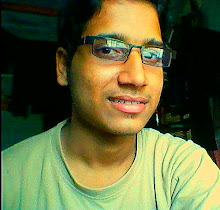Tagore's political thought was tortured. He opposed imperialism and
supported Indian nationalists, and these views were first revealed in
Manast, which was mostly composed in his twenties. Evidence produced
during the Hindu–German Conspiracy Trial and latter accounts affirm his
awareness of the Ghadarites, and stated that he sought the support of
Japanese Prime Minister Terauchi Masatake and former Premier Ōkuma
Shigenobu. Yet he lampooned the Swadeshi movement; he rebuked it in "The
Cult of the Charka", an acrid 1925 essay. He urged the masses to avoid
victimology and instead seek self-help and education, and he saw the
presence of British administration as a "political symptom of our social
disease". He maintained that, even for those at the extremes of
poverty, "there can be no question of blind revolution"; preferable to
it was a "steady and purposeful education".
Such views enraged many. He escaped assassination—and only narrowly—by Indian expatriates during his stay in a San Francisco hotel in late 1916; the plot failed when his would-be assassins fell into argument. Yet Tagore renounced his knighthood and wrote songs lionising the Indian independence movement. Two of Tagore's more politically charged compositions, "Chitto Jetha Bhayshunyo" ("Where the Mind is Without Fear") and "Ekla Chalo Re" ("If They Answer Not to Thy Call, Walk Alone"), gained mass appeal, with the latter favoured by Gandhi. Though somewhat critical of Gandhian activism, Tagore was key in resolving a Gandhi–Ambedkar dispute involving separate electorates for untouchables, thereby mooting at least one of Gandhi's fasts "unto death".
Tagore despised rote classroom schooling: in "The Parrot's Training", a bird is caged and force-fed textbook pages—to death.Tagore, visiting Santa Barbara in 1917, conceived a new type of university: he sought to "make Santiniketan the connecting thread between India and the world [and] a world center for the study of humanity somewhere beyond the limits of nation and geography." The school, which he named Visva-Bharati,η[›] had its foundation stone laid on 24 December 1918 and was inaugurated precisely three years later. Tagore employed a brahmacharya system: gurus gave pupils personal guidance—emotional, intellectual, and spiritual. Teaching was often done under trees. He staffed the school, he contributed his Nobel Prize monies, and his duties as steward-mentor at Santiniketan kept him busy: mornings he taught classes; afternoons and evenings he wrote the students' textbooks. He fundraised widely for the school in Europe and the United States between 1919 and 1921.
Such views enraged many. He escaped assassination—and only narrowly—by Indian expatriates during his stay in a San Francisco hotel in late 1916; the plot failed when his would-be assassins fell into argument. Yet Tagore renounced his knighthood and wrote songs lionising the Indian independence movement. Two of Tagore's more politically charged compositions, "Chitto Jetha Bhayshunyo" ("Where the Mind is Without Fear") and "Ekla Chalo Re" ("If They Answer Not to Thy Call, Walk Alone"), gained mass appeal, with the latter favoured by Gandhi. Though somewhat critical of Gandhian activism, Tagore was key in resolving a Gandhi–Ambedkar dispute involving separate electorates for untouchables, thereby mooting at least one of Gandhi's fasts "unto death".
Tagore despised rote classroom schooling: in "The Parrot's Training", a bird is caged and force-fed textbook pages—to death.Tagore, visiting Santa Barbara in 1917, conceived a new type of university: he sought to "make Santiniketan the connecting thread between India and the world [and] a world center for the study of humanity somewhere beyond the limits of nation and geography." The school, which he named Visva-Bharati,η[›] had its foundation stone laid on 24 December 1918 and was inaugurated precisely three years later. Tagore employed a brahmacharya system: gurus gave pupils personal guidance—emotional, intellectual, and spiritual. Teaching was often done under trees. He staffed the school, he contributed his Nobel Prize monies, and his duties as steward-mentor at Santiniketan kept him busy: mornings he taught classes; afternoons and evenings he wrote the students' textbooks. He fundraised widely for the school in Europe and the United States between 1919 and 1921.







0 comments :
Post a Comment